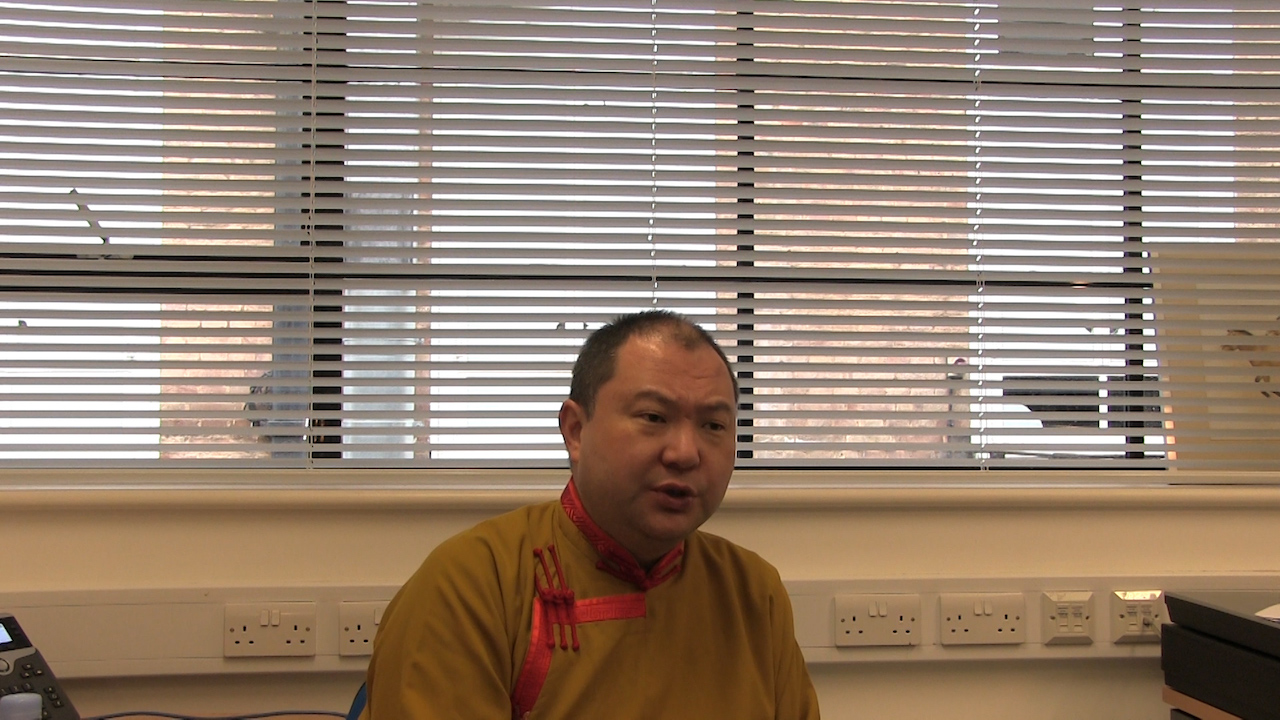Telo Tulku Rinpoche, Buddhism as a Religion and Culture
Duration: 7 mins 15 secs
Share this media item:
Embed this media item:
Embed this media item:
About this item

| Description: |
Buddhism as a religion and Buddhism as culture are two separate things that we need to understand. When we say ‘religion’, it is about individual right and choices. Am I a Buddhist or not? That is my decision, my choice. When you say ‘culture’, it has an association with society and community. Let’s say ‘I am a Kalmyk, I adopted Christianity, that is my choice, because this suits my faith, my beliefs’. I as a Kalmyk adopt Christianity and that is my individual right, and that is OK. But my culture – me being a Kalmyk – will always remain a Buddhist culture. Why? Because my community and my society is a Buddhist one. Therefore, my culture will always be a Buddhist culture, but my religion may be Christianity. Do you understand the difference between a Buddhist culture and Buddhist religion? These are two separate things.
It is not the same when people say this is Mongolian Buddhism, this is Kalmyk Buddhism, or this is Buryat Buddhism. I strongly disagree with such terms. And the reason I say this is because Buddha did not write different teachings for Mongolians, for Indians, for Tibetans, or for Kalmyks. What differentiates the Indians, Tibetans, Mongolian, and Kalmyk from each other is their cultures. Buddhism as a religion is the same for all. This is my explanation. In Kalmykia people say, ‘This is not Kalmyk Buddhism’. I ask, ‘OK. What is Kalmyk Buddhism? Tell me’. In most cases, it is about how certain things are done, how certain rituals are performed. These are cultural issues and have nothing to do with the religion and philosophy. For example, there is a Mongolian tradition of offering khadag scarfs. In Kalmykia too, people offer scarfs. Tibetans, Bhutanese and people in the Himalayan region also do so. But in Mongolia people mostly offer blue scarfs, whereas in Kalmykia –white ones. In both cases this offering is done with the same intention and meaning. The only difference is the colour of the scarfs. In Mongolian culture blue symbolises eternity, the sky, and limitlessness. When a Mongol offers a blue scarf, it symbolises endless love, an endless offering, or endless whatever that person may be thinking of. In Kalmyk culture white symbolises peace and purity. Therefore, I am offering this white scarf to you as a symbol of peace, purity of my intentions. What makes these offerings different? Cultural differences. Buddhism as a culture has small differences, but as a teaching and philosophy it is the same everywhere. In Mongolia, Kalmykia, or wherever, if a person decides that he/she does not want to be a Buddhist, that is fine. But that person will never become 100% Christian or Muslim, or Jewish, or Hindu, or even an atheist. Why? Because their culture is deeply rooted in Buddhist culture. Their culture will always remain a Buddhist one. |
|---|
| Created: | 2017-03-13 11:31 |
|---|---|
| Collection: | Kalmyk Cultural Heritage Project (SCHOOLS OF BUDDHISM) |
| Publisher: | University of Cambridge |
| Copyright: | University of Cambridge |
| Language: | eng (English) |
Available Formats
| Format | Quality | Bitrate | Size | |||
|---|---|---|---|---|---|---|
| MPEG-4 Video | 640x360 | 1.93 Mbits/sec | 105.09 MB | View | Download | |
| WebM | 640x360 | 1.34 Mbits/sec | 73.30 MB | View | Download | |
| iPod Video | 160x120 | 305.88 kbits/sec | 16.24 MB | View | Download | |
| MP3 | 44100 Hz | 250.17 kbits/sec | 13.28 MB | Listen | Download | |
| Auto * | (Allows browser to choose a format it supports) | |||||

